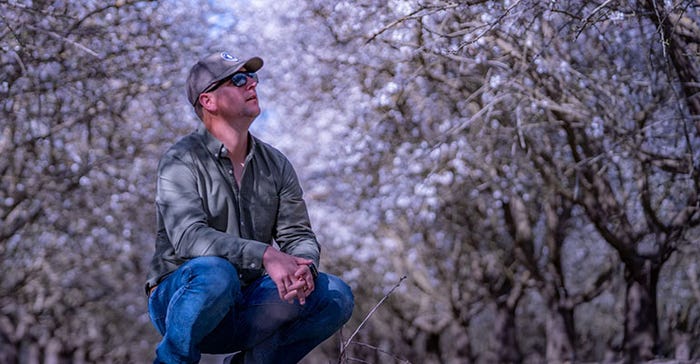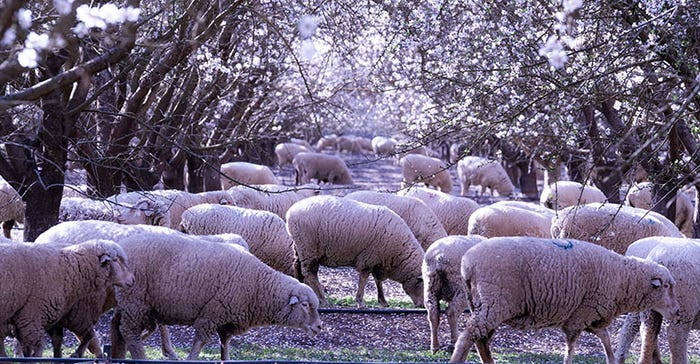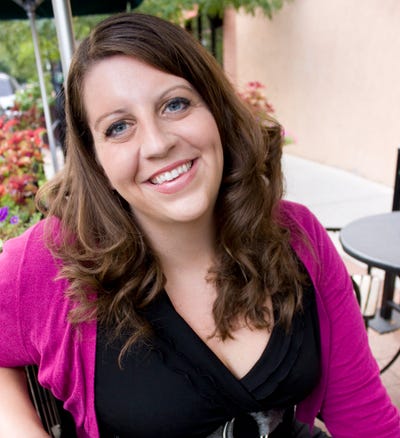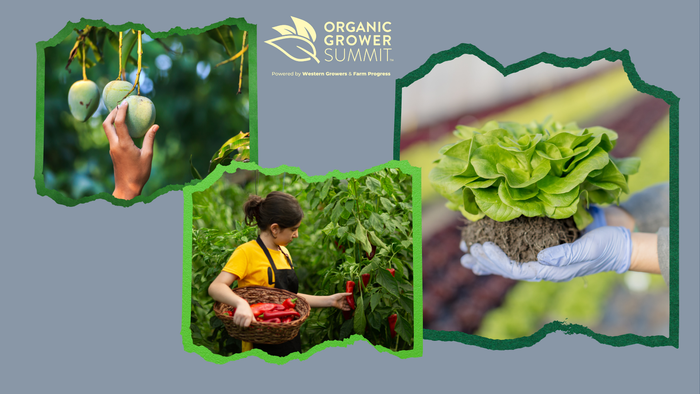The Almond Project: Brands, farmers work together for sustainability
Three food brands—alongside Treehouse California Almonds and the White Buffalo Land Trust—form a partnership to make almond farming more sustainable.
April 21, 2022

It started as a conversation between Joe Gardiner, a third-generation farmer and sales manager at Treehouse California Almonds in California’s Central Valley, and Emily Lafferty, formerly the senior manager of strategic sourcing at Simple Mills.
“We wer e talking about regenerative agriculture, the issues farms are facing and how can brands actually be a partner to the farm,” Gardiner says. “Growers are constantly being told how to do something but who’s actually partnering with them?”
e talking about regenerative agriculture, the issues farms are facing and how can brands actually be a partner to the farm,” Gardiner says. “Growers are constantly being told how to do something but who’s actually partnering with them?”
After several years, that conversation morphed into a full-fledged partnership, formally announced Tuesday between three natural product brands—Simple Mills, Daily Harvest and Cappello’s—who are working together with Treehouse California Almonds on a farmer-led partnership, called The Almond Project, to make almond farming more sustainable. White Buffalo Land Trust, a California-based nonprofit that creates regenerative agriculture systems, will serve as the project manager.
“We’re trying to reimagine how almonds can play a role in building both ecological and economic resilience in the California agriculture landscape,” says Christina Skonberg, the director of sustainability and strategic sourcing at Simple Mills.
Over five years, the group says it will work with growers to integrate a variety of soil health practices across 160 acres, transitioning 80 acres of farmland to regenerative agriculture that can be compared to 80 acres of farmland that uses conventional methods.
“The hard part with this stuff is that change, measurable change, is slow,” Gardiner says. “Through these practices, one thing we’ve already noticed is water infiltration. You don’t see the puddling of water [on the soil], which is a positive.”
Much of the project will center around the conservation and rehabilitation of land through regenerative practices, which includes grazing sheep in the orchard and using cover crops, to improve soil health.
“If we want to abate the effects of climate change, safeguard farmer livelihoods and continue to enjoy the nutritional benefits of almonds, we must build a more resilient food system,” said Rachel Drori, founder and CEO of Daily Harvest, an organic meal and snacks delivery service.
California, which grows 80% of the world’s almonds according to the Almond Board of California, faces a lot of climate problems as multi-year droughts have created water shortages and fires that dramatically impact agriculture and the food supply chain. It’s also a state that has 7,600 almond farms, 90% of which are family owned.
“It’s survival of the fittest and it’s been tough,” Gardiner says. “A lot of family farms, you can see them selling out because they can get a higher value for their land than if they wanted to grow crops.”

Proof of concept
Many industry experts say that changing farming practices by thinking more holistically—something regenerative methods incorporate—is key to helping the long-term viability of food crops, sequestering carbon, conserving water and improving biodiversity. But much of the financial responsibility and nearly all the risk usually lands on the farmers.
That’s not the case, Skonberg says, with The Almond Project, which aims to reduce farmers’ financial risk when experimenting with new practices. Ultimately, The Almond Project hopes to illustrate the financial viability of regenerative farming practices for almond farmers and gather data to motivate more farmers and food companies to transition from conventional farming methods.
“It’s a small piece of the puzzle,” Skonberg says about the 160-acre project. “We’re hoping to create a blueprint for what’s possible in agriculture and almond farming.”
Using the Savory Institute’s Ecological Outcome Verification (EOV) protocol, the White Buffalo Land Trust will measure ecological outcomes such as soil health, water infiltration, carbon sequestration and ecosystem biodiversity in the almond orchard blocks.
If the experiments show positive results, the orchard can eventually land on Savory Institute’s Land to Market Verified Regenerative Supplier Roster. The Almond Project says the information gathered will also help establish a verification program for almonds and other perennial crops.
Skonberg says the group intends to share its findings, outcomes and data to help other almond farmers and stakeholders in the food industry implement better management principles.
“We’re testing almonds, but the bigger theme is, how can we partner with farmers across our portfolio, to understand their unique context and help empower them to lead the change that we need to see in agriculture?” she says.

Collaborative conversations
Long term, the group hopes more brands will mirror The Almond Project and start speaking with farmers.
“This is a multi-stakeholder effort that’s farmer driven,” says Lauren Tucker, who oversees special projects for White Buffalo Land Trust. “Instead of a brand demanding benchmarks or goals that a farmer needs to meet in their supply, we’re working together.”
That’s unique because most food companies place a lot of focus on consumer insights, trying to understand what eaters want and what they need, and not enough time is spent trying to understand what crops would benefit a farmer’s rotation, Skonberg says.
More brands need to bring farmers into the product design process and ask farmers questions about their operational goals to ensure more cohesive partnerships.
“A lot of this project is around, ‘How do we continue to keep farming viable in this area?” Tucker says. “And what does the soil science tell us about the practices we’re implementing on the farm?”
That’s already caught the attention of other natural product brands who are interested in joining the project.
“We’ve been excited to see there’s a lot of interest from other brands,” Skonberg says. “To get this project launched, we kept it to our three founding brands, but our goal is to spread this impact across industries and we’re looking at how we can bring more people into the movement.”
About the Author
You May Also Like



.jpg?width=700&auto=webp&quality=80&disable=upscale)
